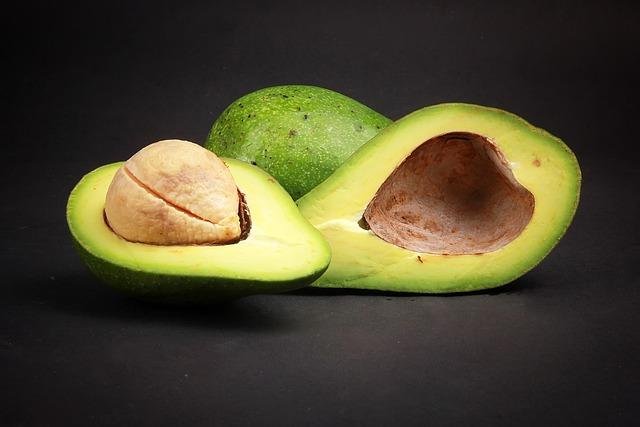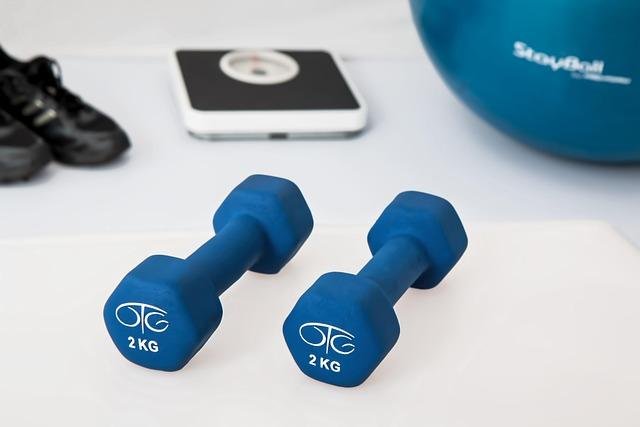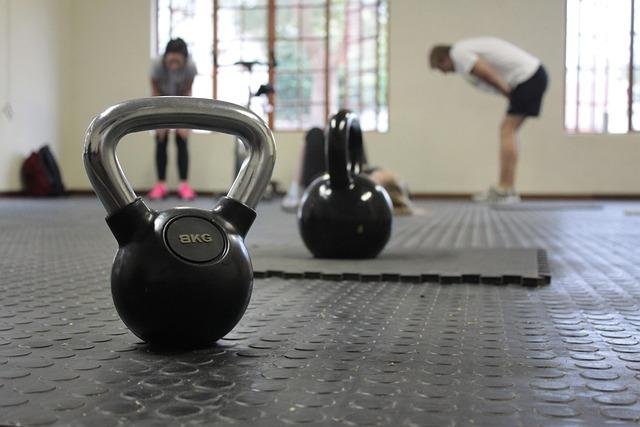Beneath the surface of our bones lies a silent strength, a framework that supports every movement, every step, every moment of life. Yet, as time weaves its story, this hidden architecture can become fragile, vulnerable to a condition known as osteoporosis. While modern medicine offers various treatments, there’s a growing desire to embrace natural ways to protect and preserve bone health. This article explores how lifestyle choices, rooted in nature’s own wisdom, can help prevent osteoporosis naturally—nurturing a foundation that remains strong from within.
Table of Contents
- Understanding Osteoporosis and Its Natural Risk Factors
- Nutrient-Rich Diets That Boost Bone Health
- The Power of Weight-Bearing and Resistance Exercises
- Lifestyle Habits That Protect Your Bones
- Herbal Supplements and Natural Remedies Worth Considering
- Creating a Holistic Routine for Lifelong Bone Strength
- Q&A
- The Conclusion

Understanding Osteoporosis and Its Natural Risk Factors
Bone health is influenced by a blend of genetic and lifestyle elements that quietly shape the strength of your skeleton over the years. Natural risk factors such as age and hormonal changes play a significant role—especially for women after menopause, when estrogen levels drop and bone density tends to decline rapidly. Additionally, genetic predisposition can increase vulnerability, meaning family history matters more than you might think. Other subtle contributors include low body weight and certain ethnic backgrounds that statistically show higher incidences of osteoporosis.
Understanding these risk factors alerts you to the importance of early prevention. While some factors cannot be altered, many lifestyle habits can be adjusted to support bone resilience. Here are some naturally occurring factors that may increase risk, alongside tips to counteract them:
- Age: Bones lose density starting in mid-adulthood—boost nourishment with calcium-rich foods and vitamin D exposure.
- Hormonal Changes: Consider natural methods to balance hormones such as phytoestrogens from plant sources.
- Body Weight: Maintain a healthy, stable weight to reduce excessive bone loss.
- Genetics: Acknowledge family history and engage in proactive bone-strengthening activities.
| Natural Risk Factor | Preventive Action |
|---|---|
| Age | Increase calcium & vitamin D intake |
| Hormonal Change | Incorporate phytoestrogen-rich foods |
| Low Body Weight | Maintain healthy weight |
| Family History | Regular bone density checkups |

Nutrient-Rich Diets That Boost Bone Health
To strengthen your bones naturally, it’s essential to integrate foods brimming with essential vitamins and minerals into your daily meals. Calcium remains the cornerstone of bone well-being, predominantly found in dairy products like yogurt, cheese, and milk. For those seeking plant-based sources, kale, broccoli, and fortified plant milks are excellent alternatives. Additionally, vitamin D facilitates calcium absorption and can be sourced from fatty fish, egg yolks, and sun exposure. Incorporating a variety of these nutrient-dense foods ensures your bones receive the support they need to stay resilient and robust.
Beyond calcium and vitamin D, the synergy of other nutrients plays a crucial role in preserving bone density. Magnesium and vitamin K2 regulate calcium metabolism, helping deposit minerals directly into the bone matrix. To satisfy these needs, consider including nuts, seeds, leafy greens, and fermented foods in your diet. Below is a simple guide to key bone-boosting nutrients and their rich sources:
| Nutrient | Primary Sources | Benefits for Bones |
|---|---|---|
| Calcium | Yogurt, Cheese, Kale | Enhances bone density and strength |
| Vitamin D | Salmon, Egg Yolks, Sunlight | Improves calcium absorption |
| Magnesium | Almonds, Spinach, Pumpkin Seeds | Regulates calcium metabolism |
| Vitamin K2 | Natto, Sauerkraut, Hard Cheeses | Directs calcium to bones |

The Power of Weight-Bearing and Resistance Exercises
Engaging in exercises that force your muscles to work against gravity not only sculpts your body but also fortifies your bones. Activities like walking, jogging, climbing stairs, and dancing stimulate bone formation by applying gentle stress, encouraging bone cells to build stronger, denser frameworks. Resistance exercises, which include lifting weights or using resistance bands, amplify these benefits by targeting specific muscle groups, making bones denser and less prone to fractures over time. Incorporating these dynamic movements into your routine creates a strong interplay between muscle strength and bone health, forming a natural defense against osteoporosis.
To maximize the impact of these exercises, consider:
- Consistency: Regular activity, at least 3-4 times a week, optimizes bone remodeling.
- Progressive Overload: Gradually increasing the weight or resistance challenges your bones effectively.
- Balanced Approach: Combining weight-bearing with resistance training ensures comprehensive bone stimulation.
| Exercise Type | Examples | Bone Benefit |
|---|---|---|
| Weight-Bearing | Walking, Hiking, Dancing | Stimulates bone density |
| Resistance | Weight Lifting, Resistance Bands | Strengthens bone structure |
Together, these exercises lubricate the pathway for healthier bones by enhancing mineral density and improving balance, reducing the risk of falls and fractures naturally and effectively.

Lifestyle Habits That Protect Your Bones
Maintaining strong bones goes beyond just calcium intake; it requires a holistic approach to daily living. Incorporating regular weight-bearing exercises such as walking, jogging, or yoga stimulates bone formation and slows down bone loss. Equally important is ensuring your diet is rich in not only calcium but also vitamin D, magnesium, and potassium, as these nutrients collaborate to enhance calcium absorption and bone density. Adequate hydration and limiting excessive caffeine or alcohol support overall skeletal health, creating an environment where bones can thrive naturally.
Adopting certain lifestyle adjustments can further safeguard your bones across the years. Prioritize a smoke-free life, as smoking accelerates bone deterioration and impairs healing processes. Practicing balance and posture-enhancing activities can reduce the risk of falls, protecting fragile bones from fractures. Below is a simple table highlighting key habits and their bone benefits:
| Habit | Bone Benefit |
|---|---|
| Weight-Bearing Exercise | Stimulates bone growth |
| Balanced Nutrition | Enhances mineral absorption |
| Quit Smoking | Prevents bone loss |
| Good Posture & Balance | Reduces fracture risk |

Herbal Supplements and Natural Remedies Worth Considering
Exploring natural options to enhance bone health can yield impressive results when combined with a balanced lifestyle. Certain herbs have been traditionally valued for their potential to support bone density and overall skeletal strength. Nettle leaf, rich in calcium and magnesium, is often brewed as a tea to help nourish bones, while horsetail supplies vital silica, an essential mineral for collagen production and bone matrix development. Incorporating these herbal allies into your daily routine may nurture resilience in your bones over time.
Alongside herbal supplements, other natural remedies present gentle yet effective ways to bolster bone health. Consider these options:
- Turmeric: Contains curcumin which has anti-inflammatory properties that may reduce bone loss.
- Dandelion root: Acts as a natural diuretic and provides potassium, which supports calcium absorption.
- Alfalfa: A rich source of vitamins K and D, both critical for healthy bone metabolism.
| Herbal Supplement | Key Benefit | Common Use |
|---|---|---|
| Nettle Leaf | Calcium & Magnesium Supply | Tea or tincture |
| Horsetail | Rich in Silica | Capsules or tea |
| Turmeric | Anti-inflammatory | Powder or supplement |
| Dandelion Root | Potassium-rich | Tea or extract |

Creating a Holistic Routine for Lifelong Bone Strength
Building and maintaining strong bones throughout life demands a multidimensional approach that integrates nutrition, physical activity, and lifestyle habits. A bone-friendly diet focuses on rich sources of calcium and vitamin D, essential minerals that fortify bone structure and enhance calcium absorption. Incorporate leafy greens, almonds, fortified plant milks, and fatty fish like salmon into your meals. Hydration also plays a subtle but crucial role by supporting nutrient transport and joint cushioning. Additionally, embrace regular weight-bearing exercises such as walking, jogging, or weight training to stimulate bone remodeling and density improvement.
Beyond diet and exercise, mindful habits contribute significantly to lifelong bone health. Manage stress effectively, as chronic stress can elevate cortisol levels that accelerate bone loss. Avoid smoking and limit excessive alcohol consumption, both known to undermine bone integrity. Consider supplementation only under medical guidance, especially for vitamin D in colder climates with less sun exposure. To visualize a balanced daily routine, refer to the table below outlining key activities that synergize for optimal bone strength:
| Daily Routine Element | Recommended | Benefit |
|---|---|---|
| Calcium-rich foods | 3 servings | Supports bone mineral density |
| Vitamin D exposure | 15 mins sunlight | Enhances calcium absorption |
| Weight-bearing exercise | 30 mins daily | Stimulates bone formation |
| Stress management | Mindfulness practices | Reduces cortisol-induced bone loss |
Q&A
Q&A:
Q1: What exactly is osteoporosis, and why should I be concerned about it?
A1: Osteoporosis is a condition where bones become weak and brittle, making them more prone to fractures. It’s like your bones losing their sturdy framework over time. Being proactive in prevention is key because once bone density is lost, it’s hard to regain.
Q2: Can lifestyle really make a difference in preventing osteoporosis?
A2: Absolutely! Your daily habits build the foundation for strong bones. Think of your lifestyle as the architect of your skeletal health — nourishing it properly and giving it the right kind of “exercise” helps keep your bones resilient.
Q3: What role does nutrition play in natural prevention?
A3: Nutrition is your bones’ best friend. Calcium and vitamin D are superstar nutrients here — calcium builds and maintains bone structure, while vitamin D helps your body absorb calcium efficiently. Incorporating leafy greens, dairy or fortified plant-based alternatives, nuts, and fatty fish can fortify your bones naturally.
Q4: How important is physical activity in this battle?
A4: Physical activity is essential. Weight-bearing exercises like walking, jogging, dancing, or even climbing stairs stimulate bone formation by putting gentle stress on them. Resistance training with weights or bands complements this by strengthening muscles that support your skeleton.
Q5: Are there daily habits to avoid for better bone health?
A5: Yes. Smoking and excessive alcohol consumption can sabotage your bone density. Also, avoid excessive caffeine, as it can interfere with calcium absorption. Prioritizing sleep and managing stress also play subtle but important roles in holistic bone health.
Q6: Can natural prevention replace medical treatment for osteoporosis?
A6: While natural strategies are powerful for prevention and early-stage management, they don’t always replace medical treatment. If you’re diagnosed with osteoporosis, work with your healthcare provider to create a comprehensive plan — natural methods can complement prescribed therapies beautifully.
Q7: How early should I start focusing on bone health?
A7: The sooner, the better. Bone mass peaks around your 20s and starts gradually declining afterward. Building strong bones early in life and maintaining them with healthy habits throughout adulthood is your best insurance against osteoporosis.
Q8: Any quick tips to incorporate into daily life for stronger bones?
A8: Sure! Grab a calcium-rich snack, step outside daily for some sunlight to boost vitamin D, exchange elevators for stairs, try a yoga or dance class, and cherish small moments of movement. Your bones thrive in an environment of consistent care and gentle challenge.
Natural prevention of osteoporosis is about cultivating a lifestyle that treats your bones as the vital, living structures they are — worthy of nourishment, movement, and mindful habits.
The Conclusion
In the journey to stronger bones, nature offers us a gentle yet powerful ally. By embracing a lifestyle rich in nourishing foods, mindful movement, and balanced habits, we lay the foundation for resilient bones that can carry us through life’s many adventures. Preventing osteoporosis naturally isn’t about quick fixes; it’s about cultivating small, consistent choices that echo through the years. So, as you step forward, remember that every calcium-rich meal, every moment spent under the sun, and every mindful stretch is a quiet investment in a future of strength and vitality. Your bones will thank you for it, quietly supporting every chapter yet to come.















Leave feedback about this